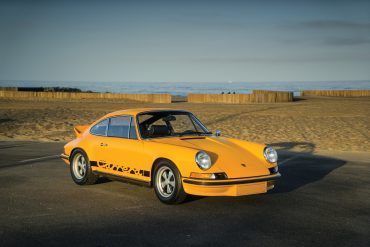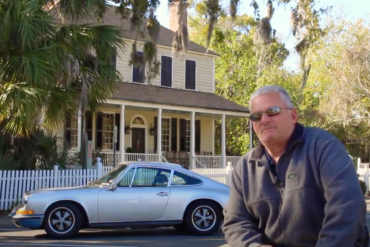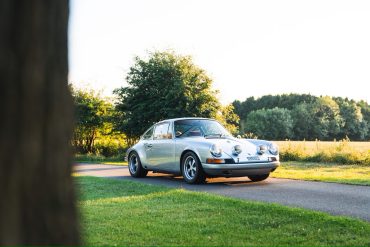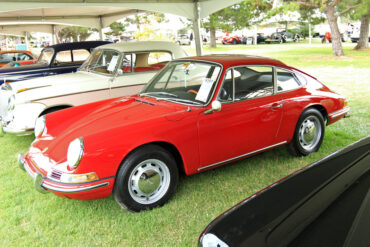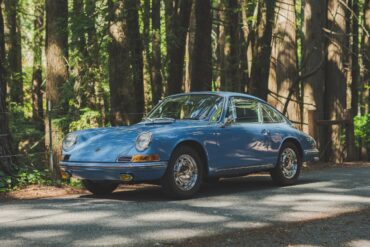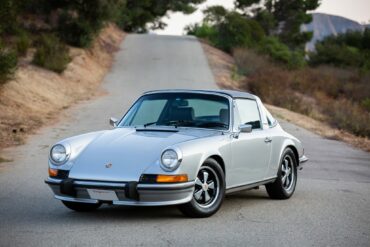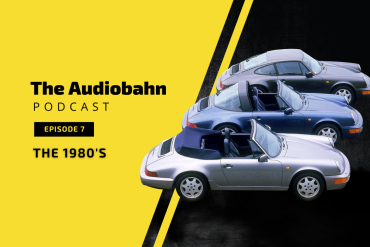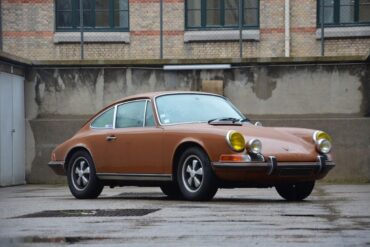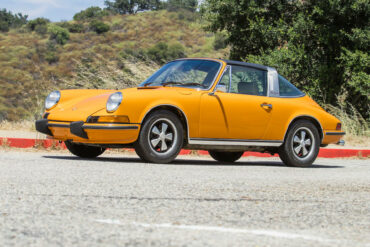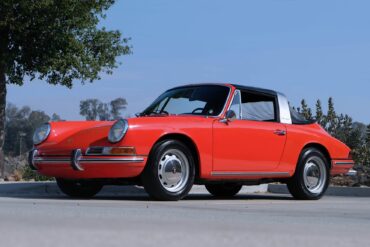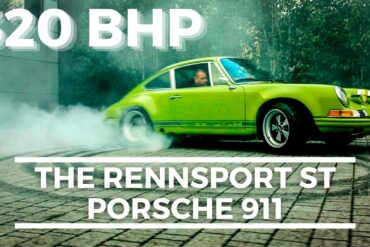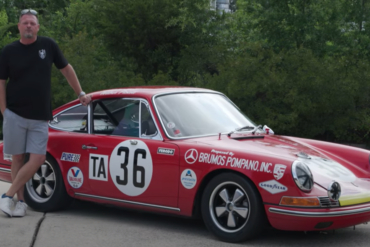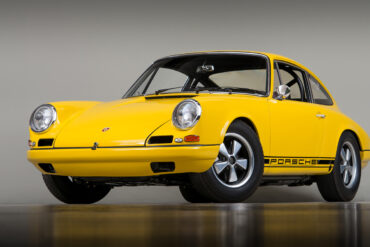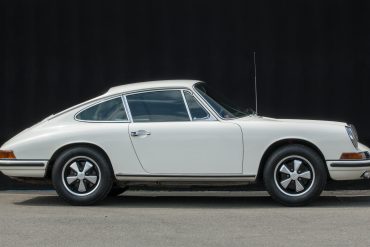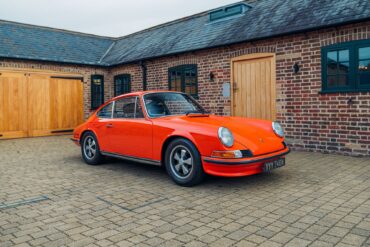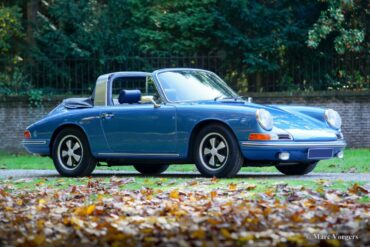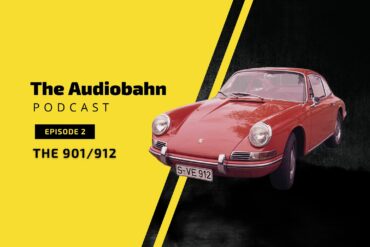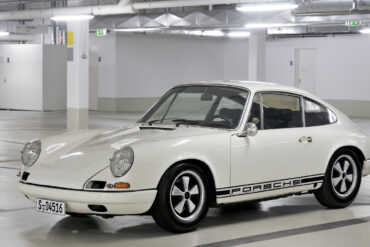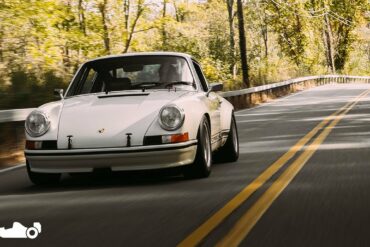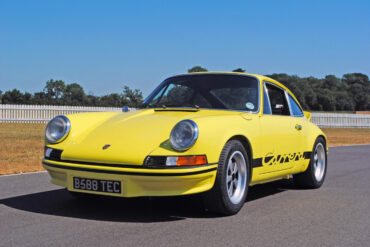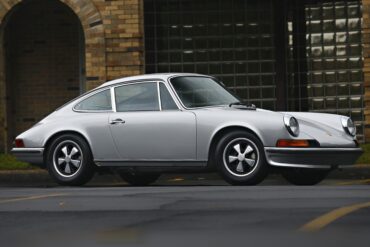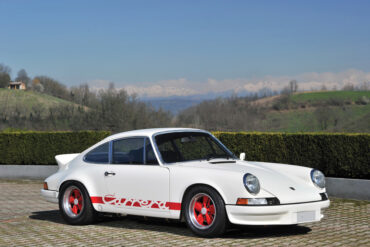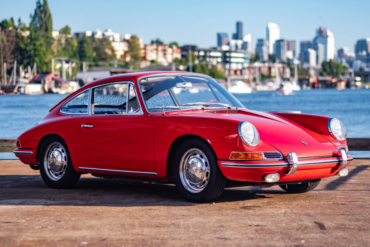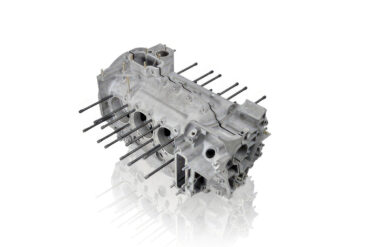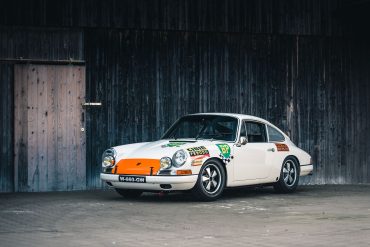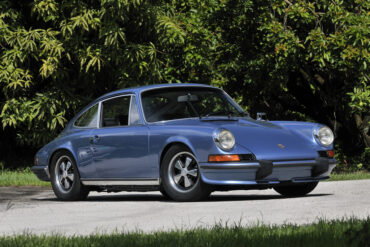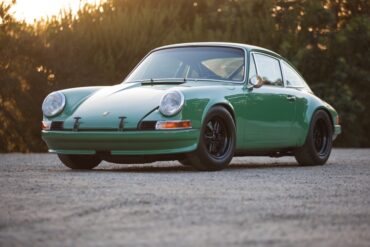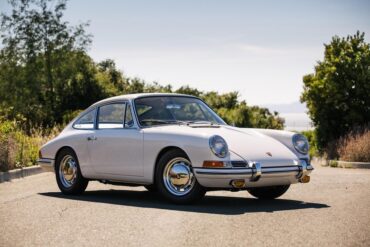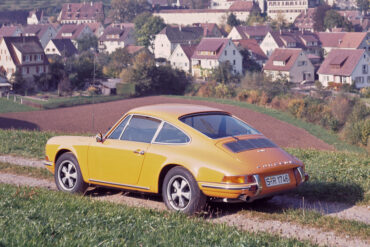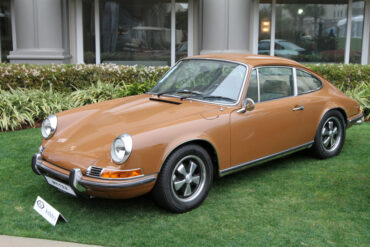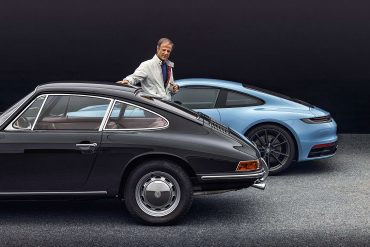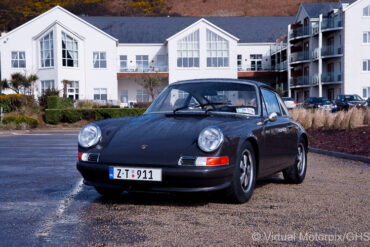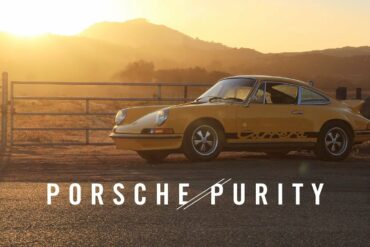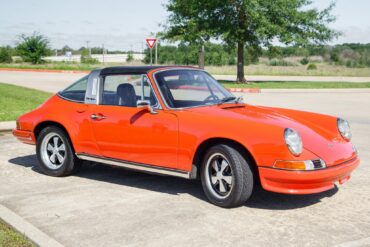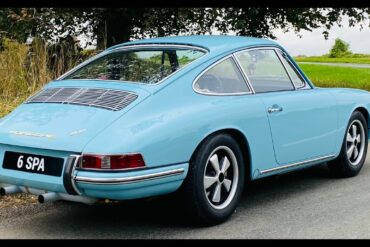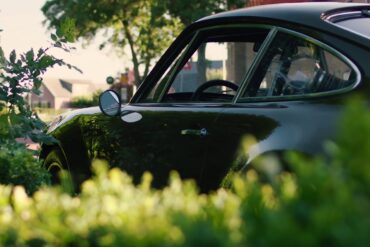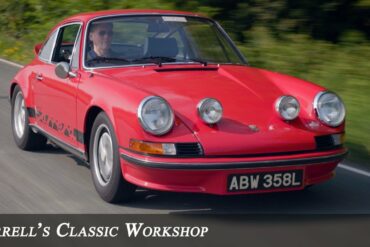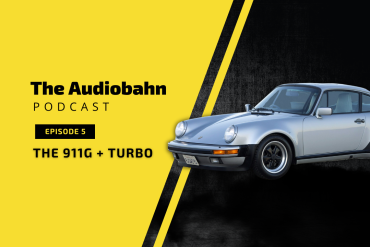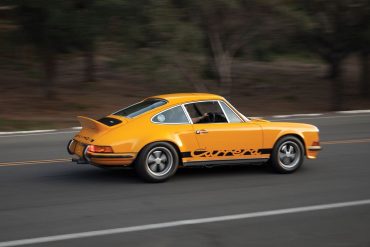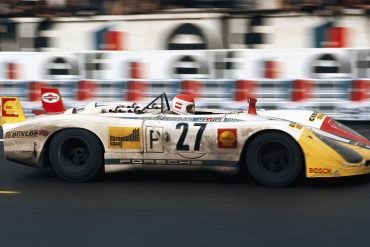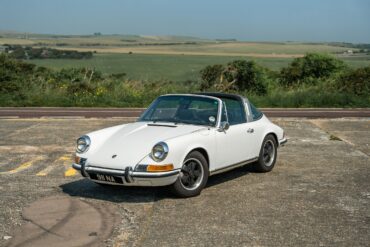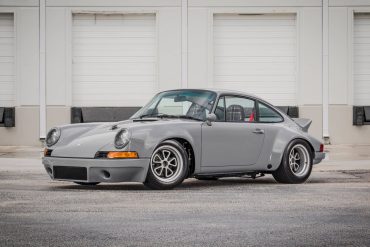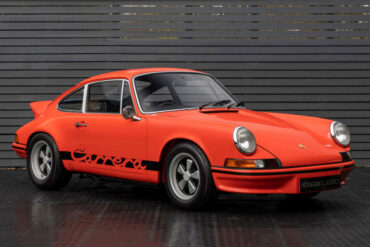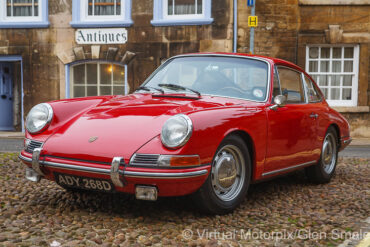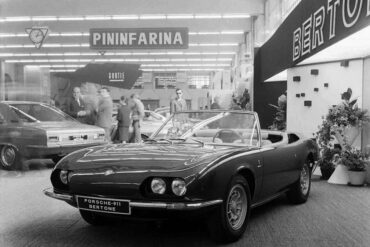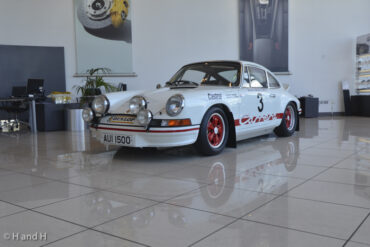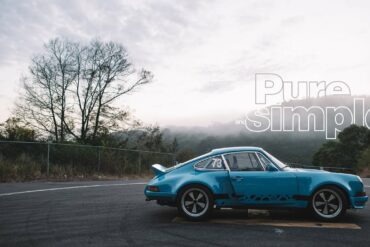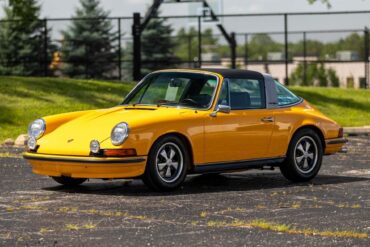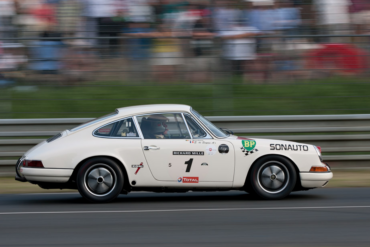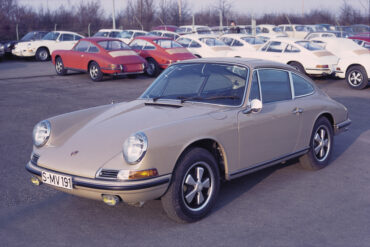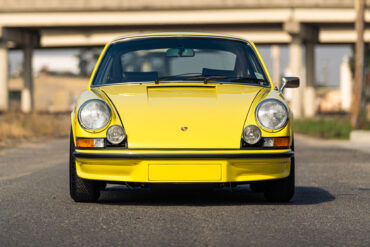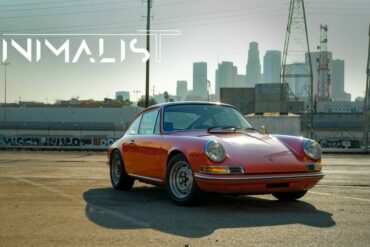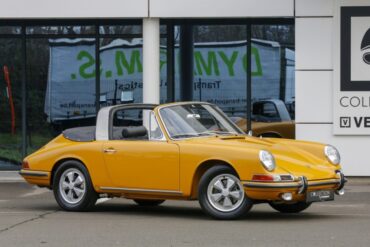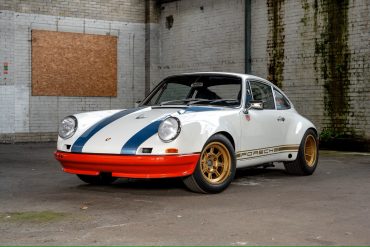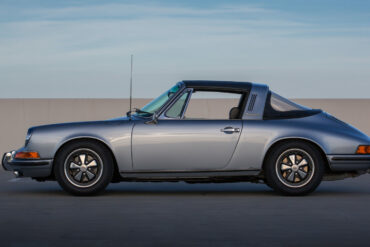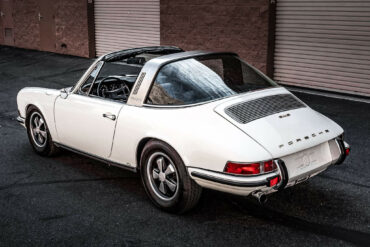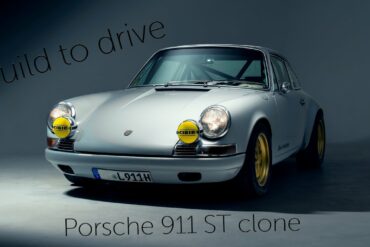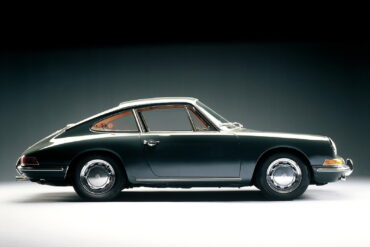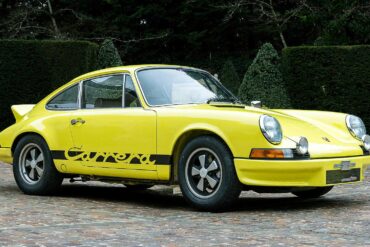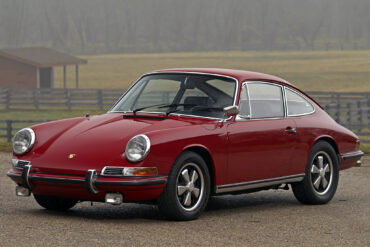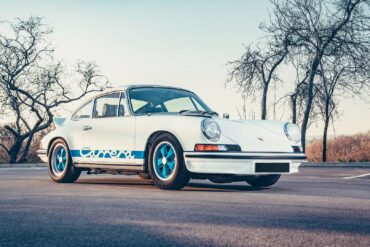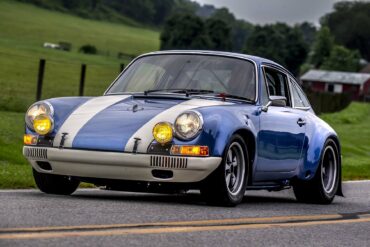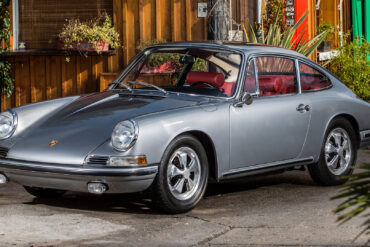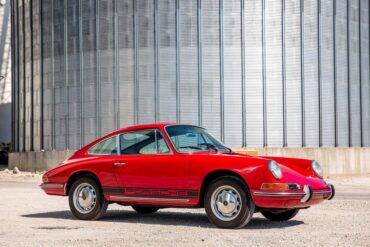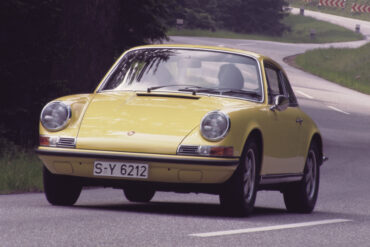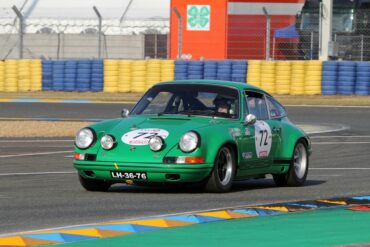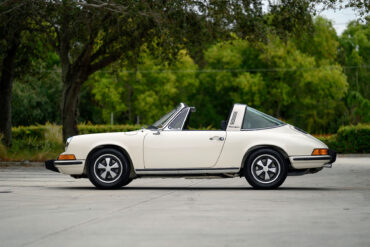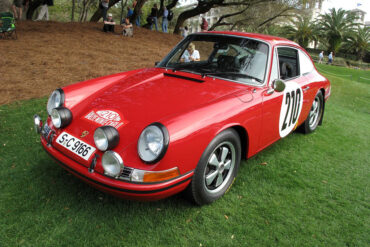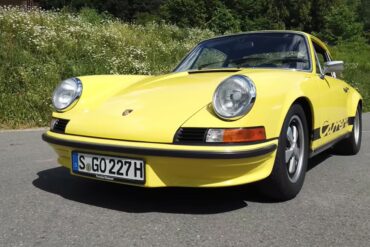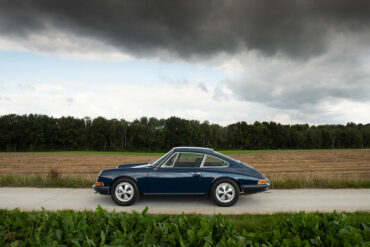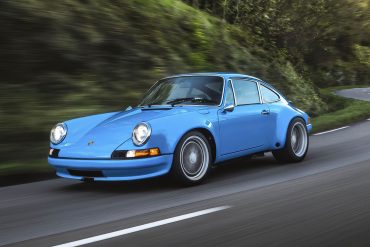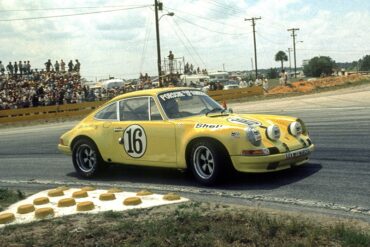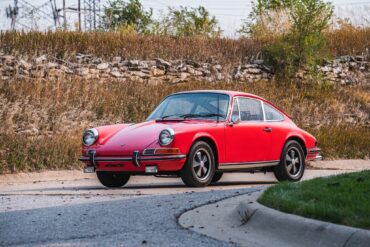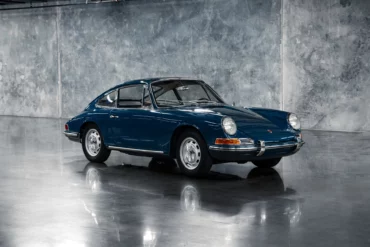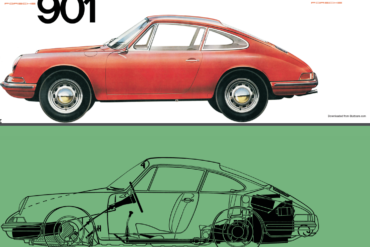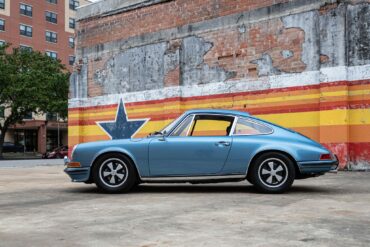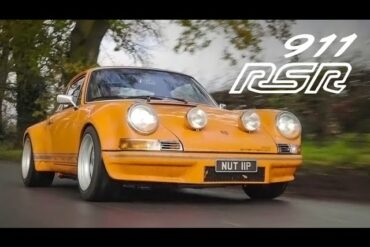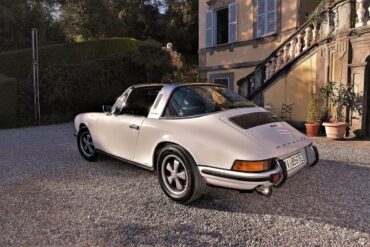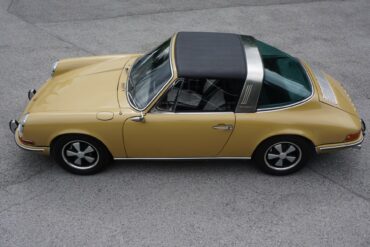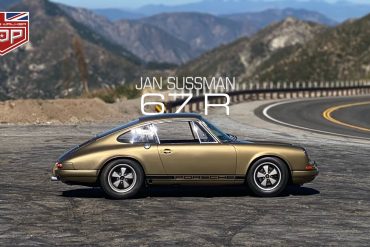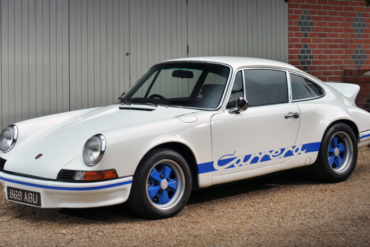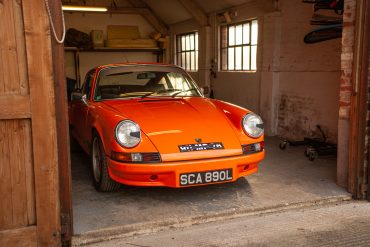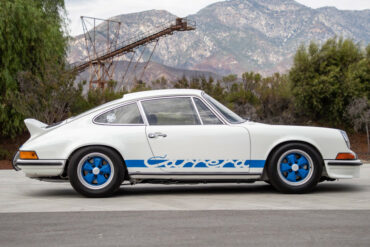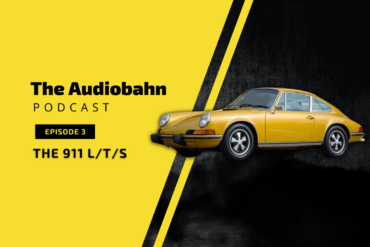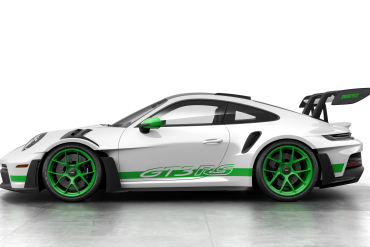Beautifully-Restored Carrera RS Lightweight Found on Issimi The Carrera 2.7 RS is the stuff of legends, well known as the...
Porsche 911 (F-Series)
The Porsche 911 was introduced to the world in the fall of 1963 at the Frankfurt Motor Show. It was developed as a replacement for the highly successful Porsche Model 356. It was larger, more powerful, more comfortable and more competitive on the track than any other comparable car on the market at the time. The original air-cooled, boxer-engined 911 was in production from 1964 through 1989, but on this page, we are focused on the original F-Body cars. For 1969 Porsche made the single biggest change to the 911 thus far by lengthening the wheelbase 2.5 inches to reduce the oversteer characteristics inherent to rear-engined cars. Pre-1969 cars are often referred to as the short-wheel base cars (SWB) and 1969 onwards called the long-wheelbase cars (LWB). 1972 and 1973 can also be taken as one group because there were very few changes from year to year. See all of our F-Body Classic 911 Research.
The Story Behind the 2.7 RS The 2.7 RS was the first 911 to carry the Carrera badge, this is...
Revealed at the 1972 Paris Auto Show, the Carrera 2.7 RS was a special model used to homologate the 911 in Group...
Interview the owner of a 1971 Porsche 911 In this video we Interview the owner of a 1971 Porsche 911...
This 1972 Porsche 911 ‘Special’ is a custom creation inspired by the early 1970s S/T model by Tuthill Porsche. Beneath...
1965 – 1969 Porsche 912 Pictures & Gallery...
The Porsche 911 was developed as a replacement for the highly successful Porsche Model 356. The Porsche 911 was larger, more...
1972 – 1973 Porsche 911 S 2.4 Targa (LWB) Pictures & Gallery...
The Audiobahn E7: Porsche in the 80s Welcome to The Audiobahn, the Stuttcars.com podcast focused on all things Porsche. In our...
Along with all the C-series improvements to the 911 line, the 1970 Porsche 911 S was upgraded to include a 180 bhp version flat-6. This further improved the performance credentials of the model which already had Fuchs light alloy wheels and bigger brakes. Specific to the S model's engine was a re-profiled camshaft, larger valves, better porting, higher compression and larger jets for the Weber carburetors. This resulted in 30 more horsepower for a total 180 horsepower.
1972 – 1973 Porsche 911 E Targa 2.4 (LWB) Technical Specifications Induction Normally-aspirated Cooling Air/oil-cooled Valvetrain Single overhead camshaft Injection...
1968 – 1969 Porsche 911 T Targa 2.0 (SWB & LWB) Technical Specifications Engine Type Flat 6 Induction Normally-aspirated Cooling...
A Porsche 911 S/T Restomod Darryl Sleath investigates the Rennsport Porsche 911 ST – a 320 bhp Porsche 911 that’s...
While chassis 301172 is a competent race car, it has been kept in exceptional physical and mechanical condition overall since...
1967 Porsche 911 R Pictures & Gallery...
1968 Porsche 911 L Coupe 2.0 (SWB) Technical Specifications Type Series Production Car Model Years 1968 Built At Germany Body...
1972 – 1973 Porsche 911 E Coupe 2.4 (LWB) Technical Specifications Induction Normally-aspirated Cooling Air/oil-cooled Valvetrain Single overhead camshaft Injection...
1968 Porsche 911 L Targa 2.0 (SWB) Pictures & Gallery ...
Episode Two: The Porsche 901/912 Summary Welcome to The Audiobahn, the Stuttcars.com podcast focused on all things Porsche. In our first...
1967 Porsche 911 R Technical Specifications Type Racing Car Built At Germany Production 20 Engine Type 901/22 Flat-6 Position Rear...
A Porsche 911 S/T Restomod James talks about how his German-market Porsche 911 came to be a 911 ST recreation....
1973 Porsche 911 Carrera RS 2.7 Touring Pictures & Gallery ...
1972 – 1973 Porsche 911 S 2.4 Coupe (LWB) Pictures & Gallery...
Of all the 1580 Carrera RS 2.7s, only 200 were made were ordered with this lightweight ‘Sports’ trim which made the car more responsive and purposeful. In many ways these few cars were the ultimate road-going Porsche of the 1970s. Known as the Sports, Lightweight or even the M471 option code, these cars had improved the power-to-weight ratio. Reports of 75kg were stripped from the standard model by fitting lightweight body panels and lightweight glass.
1965 – 1968 Porsche 911 Technical Specifications Production Years 1964 – 1968 Built At Germany Body Stylist Ferdinand Price $...
New life for 911s with magnesium engine cases Stuttgart/Atlanta. Porsche Classic now offers magnesium crankcases from the factory for classic 911...
Thanks to the launch of its modern 911 R, the original Porsche 911R has been thrust firmly back into the limelight over the...
The final early 911S befitted from Porsche's 2.4-liter engine the the long-wheel-base body. As such it is one of the final classic 911s before the 2.7 came out in 1973. Visually, the 2.4 range received a new chin on the front valence that was standard on the 911S and optional for the rest of the range. The S model had slight larger 6Jx15 Fuchs alloy wheels over the other models. The final early 911S benefitted from Porsche's 2.4-liter engine the the long-wheel-base body
A Beautiful Outlaw 71 Porsche 911T Hotrod in Leaf Green – 3.4L from Mirage International – 270hp – fully rebuilt...
The first generation of the Porsche 911 begins in late 1964 and goes through 1968. The "base" model was an instant hit. During this period, Porsche would make continuous improvements and tweaks to the body, to its short wheelbase (SWB) chassis, and to its 2.0 liter flat six engine. Model year 1968 would be the last for the early 911, a transition that would begin with the introduction of the higher output 911S in 1967, followed by the 911L and a new entry level 911T in 1968, and finally, the 911E in 1969. The base 911 was available as both a Coupe and Targa (starting in '67).
The Porsche 911T continued as the entry level 911 for the 1970 and 1971 model years, sitting below the 2.2L 911 E and the 2.2 L 911 S. The 911 T featured all the upgrades that came with C-Series production updates including longer wheelbase and Fuchs alloy wheels. During its production years it was available as both a Coupe or Targa bodystyle. As with the E and S variants, Porsche would upgrade the 911T to a larger 2.2 liter engine.
1970 – 1971 Porsche 911 T 2.2 Coupe (LWB) Pictures & Gallery...
Evolution, not Revolution Since its debut in 1964, the Porsche 911 has epitomized engineering evolution. Conceived by Ferdinand “Butzi” Porsche,...
Perfectly Describing the Magic of the 911 2.7 RS Respected architect Jonathan Segal poetically describes what the 1973 Porsche 911 2.7L...
1972 – 1973 Porsche 911 T 2.4 Targa (LWB) Pictures & Gallery...
1965 911 SWB by Sports Purpose. Is this £350,000 Porsche the purest driving 911 of them all? This ’65 Porsche...
One Man’s Perfect 911 Short movie about my Porsche 1969 912 that was turned into my dream hot rod 911...
The 911 Porsche feared no-one would buy! In this episode we bring you a rather special car, one of the...
The Audiobahn E5: The Porsche 911 G Series (& the Turbo) Welcome to The Audiobahn, the Stuttcars.com podcast focused on all...
Imagine, if you will, that you are in Paris, France, in October 1972. There is an automobile show, a fairly...
Broad Arrow’s All-Porsche auction will take place with Air|Water on Saturday, April 27th, and feature approximately 70 Porsches similar to...
1970 – 1971 Porsche 911 S 2.2 Targa (LWB) Pictures & Gallery...
This 1970 Porsche 911 is a one-of-a-kind creation commissioned by Orbit Racing for a complete RSR/outlaw-style restoration, resulting in an...
1973 Porsche 911 Carrera RS 2.7 Lightweight Technical Specifications Built At Stuttgart, Germany Production 200 Engine Air-Cooled Flat 6 w/Dry...
Southern California Porsche dealer Johnny von Neumann knew what his customers wanted, and a Targa top Targa 911 wasn’t it. With Porsche’s approval, he hired designer Nuccio Bertone to create a one-off 1966 Porsche 911 Spyder, in hopes of launching low-volume production. Just one example was constructed. The engine incorporated a vertically-mounted cooling fan, a 9.1:1 compression ratio and two triple-choke 40PI Solex carburettors. Peak output was 130bhp at 6100rpm and 174lb-ft at 4200rpm. Transmission was via a Type 901 five-speed gearbox and single-plate clutch.
How the RS differs from lesser 911s The 1973 Porsche Carrera RS is instantly recognizable thanks to its distinctive “Carrera”...
Porsche 911 Carrera RS Sport Lightweight ‘AUI 1500’ as it is today The Porsche 911 Carrera RS 2.7 broke cover...
A Unique Tribute From its humble beginnings, this 1970 911 enjoyed a varied life, most notably as a rather tasty...
Porsche 911 (F-Body) Production & Chassis Numbers (1964 – 1969) ...
1968 Porsche 911 TR Technical Specifications Configuration Type 901/22 B6 Location Rear, longitudinally mounted Construction aluminium block and head Displacement...
In 1967 the A-Series Porsche production line was divided into the entry-level 911T, the standard 911 L for Lux and the sporting 911S. The 911L was effectively the 911 2.0 from previous years with only very minor updates such as new door handles, a brushed aluminum dashboard, a black steering wheel and other very minor details. In Europe, where it was considered the midrange model it featured engine Type 901/06 (Type 901/07 with Sportomatic) rated at 130 hp. In North America, the 911L was the highest level offering.
Tradition is Born Each year during the second week in March, the Amelia Island Concours d’Elegance takes place at The...
1969 Porsche 911 T Owner Story The 911 T was the most stripped-down model in the range, and arguably the...
1967 – 1968 Porsche 911 S Targa 2.0 (SWB) Technical Specifications Engine Type Flat 6 Induction Normally-aspirated Cooling Air/oil-cooled Valvetrain...
The Porsche 911 ‘STR II’ is a custom creation designed by the renowned Magnus Walker. It pays tribute to the...
1969 Porsche 911 E Targa 2.0 (LWB) Pictures & Gallery ...
1970 – 1971 Porsche 911 E Targa 2.2 (LWB) Technical Specifications Induction Normally-aspirated Cooling Air/oil-cooled Valvetrain Single overhead camshaft Injection...
Clean & Fast 911 ST Clone Karsten has build his Porsche the way he wanted it. Clean an fast, like...
Porsche 911 (1963 – 1973) Story & History F-Body – The 1st Generation Porsche 911 Premiere: 1963 September 12 at...
911 2.7 RS Carrera highlights One of the most iconic sports cars of all time Delivered new in Germany Present...
The 911 S was introduced to increase the performance potential of the very successful 911. It had a more powerful...
1973 Porsche 911 Carrera RS 2.7 Touring Technical Specifications Built At Stuttgart, Germany Price $ $25,000 Engine 911/83 Flat-6 Position...
The ST legend The Porsche 1972 911 ST is legendary in automotive history and coveted for its exceptional performance. Under...
Porsche 911 (Classic) Technical Specifications & Model Comparison (European Variants) Comparison: European specs 911 2.2 Comparison: European specs 911 2.4...
Put most simply, a 912 is essentially a 911-style body mated with a 356-derived 4-cylinder engine. The 356 was Porsche’s first mass-marketed sports car. The Porsche 911 is the most successful sports car of all time. the new 912 came equipped with 90HP motor was a slightly detuned version of the 95HP motor that had powered its predecessor, the 356SC. However, despite this reduction of power, and despite the 912 being a heavier car, it was actually faster than the 356SC thanks to more streamlined aerodynamics and a more advanced suspension system.
The Porsche 911E continued as the midrange 911 model for 1972 and 1973, fitting between the contemporaneous 2.4L 911T and the 2.4L 911S. As with the T and S variants, Porsche would upgrade the 911E to a new, larger 2,341 cc (2.3 L) engine, commonly known as the "2.4 L" engines. The 911E version, designated 911/52 was rated at 165 hp (it was designated 911/62 with Sportomatic). With the power and torque increase, the 2.4-liter cars also got the newer and stronger transmission.
1971 Porsche 911 S/T Pictures & Gallery...
Porsche’s 911 Starting in 1964 with the original 911, Porsche has produced a line of six-cylinder rear-engine sportscars that could...
1968 – 1969 Porsche 911 T Coupe 2.0 (SWB & LWB) Pictures & Gallery...
It was the first motorsport team-designed consumer grade car, first 911 with a staggered stance, and first factory-installed fixed wing....
1967 – 1968 Porsche 911 S Coupe 2.0 (SWB) Technical Specifications Engine Type Flat 6 Induction Normally-aspirated Cooling Air/oil-cooled Valvetrain...
In a world of horsepower ratings, Nürburgring lap times, and numerous statistics that often don’t tell the complete story, it’s...
Porsche developed the S/T, of which 33 were built in 1970 and 1971, taking full advantage of new FIA rules allowing a two-inch wider track. Accordingly, wheel arches were widened to accommodate seven-inch front and nine-inch rear wheels. Weight reduction was even more radical, including thinner-gauge steel for the roof and floorpans. Heating ducts, seat slide supports, the glove-box lid, ashtray, sun visors and rear torsion-bar covers were deleted.
The Porsche 911 E was designed to fall nicely between the 911 T touring model and the top of range high-performance 911S. The Porsche 911 T would continue for its second year in Europe, and newly introduced into the United States market, as the entry level offering for the 911, sitting below the 1969 911E and the 1969 911S. The 1969 911E was powered by engine Type 901/09 (Type 901/11 with Sportomatic) featuring mechanical fuel injection (MFI). The 2.0 L Aircooled Flat 6 was good for 140 bhp at 6500 rpm.
The first 912s were made in the spring of 1965, alongside the last of the 356s. Originally the 912 was...
Porsche 911 Sales Brochures (1st Generation) Clearly going back this far, sales catalogs for Porsche cars are hard to find....
1972 – 1973 Porsche 911 E 2.4 Coupe (LWB) Pictures & Gallery ...
Sublime Or Sacrilege? ‘If you want to build something, build it how you want it.’...
1972 – 1973 Porsche 911 S Targa 2.4 (LWB) Technical Specifications Induction Normally-aspirated Cooling Air/oil-cooled Valvetrain Single overhead camshaft Injection...
1969 Porsche 911 E Targa 2.0 (LWB) Technical Specifications Engine Type Flat 6 Induction Normally-aspirated Cooling Air/oil-cooled Valvetrain Single overhead...
Based on the 911S, the 911 R was produced by Porsche to compete in the FIA’s GT 2.0 category. To...
Porsche 911 Carrera RS 2.7 1973 Porsche 911 Carrera RS 2.7 Engine: 2,687 cc, air-cooled horizontally flat six Production dates:...
Written by: Glen Smale Images by: Virtual Motorpix/Glen Smale and Corporate Archives Porsche AG Already a Member? Sign in to...
Porsche Option Codes – Porsche 911 (1973 Model Year) Looking to decode your 1973 Porsche 911 option codes? Want to...
Episode Three: The Porsche 911 T, 911 L, & 911 S Summary Welcome to The Audiobahn, the Stuttcars.com podcast focused on...
Porsche recently announced an update for the new 911 GT3 RS. As a tribute to the 911 Carrera RS 2.7,...
This 1967 Porsche 911S coupe was transformed into a 911R-inspired racer in 1991 by Gary and Rod Emory of Parts...
No More Content




